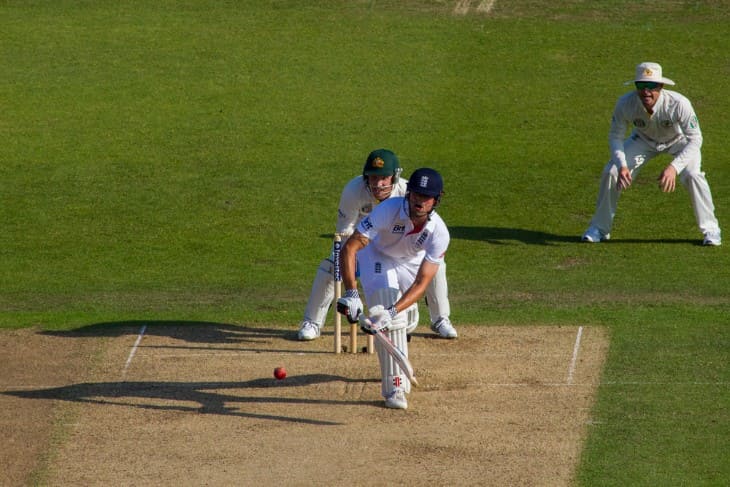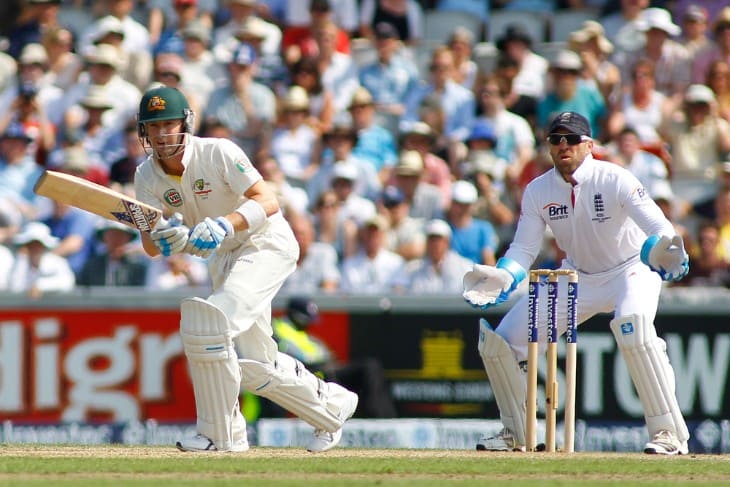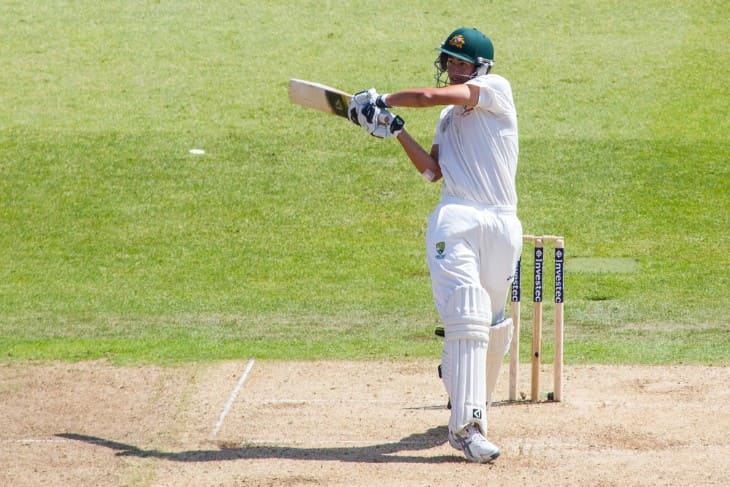- Understanding the Role of a Runner
- The 2011 Rule Change: A Pivotal Moment in Cricket
- Safety Concerns: Risks Associated with Runners
- Tactical Implications of Using Runners
- Fair Play and Equality
- The Impact on Disabled and Injured Players
- Perspectives from Cricket Governing Bodies
- Global Reactions to the Ban on Runners
- Adaptations and Strategies Post-Runner Era
- Conclusion
As cricket became more competitive and physically demanding, the use of runners began to raise questions regarding fairness and the integrity of the game. Critics argued that runners could potentially provide an unfair advantage to the batting team. Furthermore, there were concerns about the ambiguous nature of injuries and the potential for exploitation of this rule by players seeking a tactical edge. This debate set the stage for a critical re-evaluation of the runner's role in modern cricket.
Understanding the Role of a Runner
The role of a runner in cricket was straightforward yet crucial. Here are key points outlining their responsibilities:
- Assisting the Injured Batsman: The primary role of a runner was to run between the wickets on behalf of an injured batsman, enabling the batsman to continue playing without the physical strain of running.
- Selection Criteria: Typically, the runner had to be a member of the batting side who had not been dismissed yet. This requirement ensured a level of fairness in the game.
- Coordination and Communication: Runners needed to have excellent coordination and communication skills. They had to sync their actions with the injured batsman, avoiding run-outs and other miscommunications.
- Understanding of the Game: A good understanding of the game's tactics was essential for runners. Their decisions could significantly impact the match's outcome.
The use of a runner added a unique strategic element to the game. While it was primarily a measure to accommodate injured players, it also required tactical thinking from both teams. The batting team had to carefully select a suitable runner who could complement the injured player's style, while the fielding team had to adjust their strategy to account for the presence of an additional player on the field. This aspect of the game added depth and complexity, making the role of the runner a significant one in the tactical landscape of cricket.
The 2011 Rule Change: A Pivotal Moment in Cricket
The year 2011 marked a significant turning point in the history of cricket, particularly concerning the role of the runner. This year, the International Cricket Council (ICC) implemented a pivotal rule change, effectively banning the use of runners in all forms of international cricket. This decision stemmed from growing concerns about the misuse of the runner rule. There were instances where players, not significantly impaired, would call for a runner, raising questions about the integrity of the sport. The ICC's decision aimed to preserve the fairness and competitiveness of the game.
The rule change sparked a widespread debate within the cricket community. While some viewed it as a necessary step to maintain the sport's integrity, others saw it as a move that could potentially disadvantage genuinely injured players. The question of why are runners not allowed in cricket became a topic of extensive discussion, highlighting the delicate balance between upholding tradition and adapting to the evolving nature of the sport. The ban also prompted teams to re-evaluate their strategies, particularly in dealing with player injuries during matches.
Safety Concerns: Risks Associated with Runners
The decision to ban runners was also influenced by safety concerns. The presence of a runner on the field introduced several risks, which are outlined below:
- Increased Risk of Collisions: With an additional player on the field, the likelihood of collisions increased, potentially leading to injuries. This was a significant concern, especially in high-stakes matches where players are more aggressive.
- Confusion and Miscommunication: The involvement of a runner often led to confusion and miscommunication on the field. This could result in run-outs or other misplays, affecting the flow and outcome of the game.
- Physical Strain on Runners: Runners, often not adequately warmed up, faced the risk of physical strain and injury. This was particularly concerning for players who were not expecting to play a major role in the innings.
- Compromised Fielding Efficiency: Fielding teams had to adjust to the presence of an extra player, which could disrupt their fielding strategies and efficiency. This was a tactical challenge that sometimes compromised the team's defensive setup.
These safety issues were a crucial factor in the ICC's decision to ban runners. The risks associated with the use of runners were deemed to outweigh the benefits, leading to the rule change. While this move was controversial, it was seen as a step towards ensuring the safety and fairness of the game, addressing the underlying question of why are runners not allowed in cricket.

Tactical Implications of Using Runners
The tactical dynamics of cricket were significantly altered with the use of runners. The strategy behind employing a runner was multifaceted and often crucial in close matches. For the batting team, a runner could maintain the momentum of the innings, especially if a key batsman was injured. The runner enabled the injured player to focus on batting without the physical strain of running, often proving to be a tactical advantage. On the other hand, the fielding team faced additional challenges, as they had to strategize against two active runners. This required quick thinking and adaptability from the fielders and the captain, as traditional fielding strategies might not be as effective.
However, this tactical element also led to the controversy surrounding the use of runners. Questions about the legitimacy of injuries and the potential for exploiting the rule for tactical gain were raised. This situation often put the umpires in a difficult position, as they had to make judgment calls on the authenticity of an injury. The tactical use of runners, while adding an intriguing dimension to the game, played a part in the debate over why are runners not allowed in cricket. The ban sought to simplify these complexities and maintain the integrity of the game.
Fair Play and Equality
The concept of fair play was central to the discussion about the use of runners in cricket. The spirit of cricket, as promoted by the ICC, emphasises fairness, respect, and equality. The runner rule, while initially intended to uphold these values by supporting injured players, eventually raised concerns about equality and fair play. Instances where players appeared to misuse the rule for tactical benefit contradicted the ethos of the sport. This misuse led to debates about the fairness of the game and whether all teams were being given an equal opportunity to compete.
Furthermore, the runner rule posed ethical questions. For instance, what constituted a legitimate injury, and who had the authority to make this determination? The subjective nature of these decisions often led to controversies and disagreements on the field. This ethical ambiguity was a key factor in the ICC's decision to ban runners, as it aimed to uphold the principles of fairness and equality in the sport. The question of why are runners not allowed in cricket is thus rooted in the desire to maintain the ethical standards and integrity of the game, ensuring that all teams compete under the same conditions without any undue advantages.
The Impact on Disabled and Injured Players
The ban on runners in cricket had a significant impact on disabled and injured players. Before the rule change, players who sustained injuries during a match could rely on the assistance of a runner to continue their innings. This provision was particularly important for players who suffered minor injuries that hindered their ability to run but did not prevent them from batting. The runner system allowed these players to contribute to their team's performance without aggravating their injuries.
However, with the implementation of the ban, such players found themselves at a disadvantage. The absence of runners meant that players with injuries had to either continue playing with limited mobility or retire hurt. This situation raised concerns about inclusivity in the sport. Critics of the ban argued that it could discourage players, especially those prone to injuries, from participating in the game. The debate over why are runners not allowed in cricket extended beyond tactical and ethical considerations to encompass issues of accessibility and inclusivity within the sport.
Perspectives from Cricket Governing Bodies
The decision to ban runners in cricket was not made lightly. It involved extensive consultations and deliberations among various cricket governing bodies. Here are some of the key perspectives that influenced this decision:
- International Cricket Council (ICC): The ICC, as the global governing body for cricket, played a pivotal role in the decision. Their primary concerns revolved around maintaining the integrity and fairness of the game. The ICC sought to ensure that the rules were applied consistently and that no team gained an unfair advantage.
- National Cricket Boards: National boards had varied opinions on the ban. Some supported the move, citing the need for uniformity in the rules and the importance of preventing potential abuses of the system. Others were more cautious, expressing concerns about the impact on players' health and the game's tradition.
- Players' Associations: Players' associations worldwide voiced concerns about the welfare of the players, especially those who might suffer injuries during a match. They stressed the need for rules that prioritised players' health and well-being.
- Umpires and Match Referees: Umpires and match referees, responsible for enforcing the rules on the field, often faced challenges with the runner system. The ambiguity in determining legitimate injuries and the added complexity during play were factors that many supported addressing.
These diverse perspectives highlight the complexity of the issue and the range of factors considered in answering why are runners not allowed in cricket. The decision was a result of a comprehensive evaluation of the game's needs, balancing tradition with the evolving nature of modern cricket.

Global Reactions to the Ban on Runners
The ban on runners elicited diverse reactions from the global cricket community. These reactions varied from strong support to critical opposition, reflecting the different ways in which cricket is played and perceived around the world. The following points highlight some of these reactions:
- Support from Some Quarters: In countries where cricket is played at a highly professional level, the ban was often seen as a positive step towards maintaining the integrity and competitiveness of the sport. These supporters argued that the ban would prevent the misuse of runners and ensure a level playing field.
- Criticism from Other Areas: Conversely, in regions where cricket is deeply intertwined with tradition, the ban faced criticism. Critics argued that it disregarded the spirit of the game and the historical importance of accommodating injured players. They feared that the ban might lead to a rigid interpretation of the rules, potentially harming the game's inclusiveness.
- Mixed Opinions Among Players and Coaches: Players and coaches had mixed opinions. While some appreciated the clarity the ban brought to the game, others felt it was an unnecessary change that could disadvantage genuinely injured players.
- Media and Commentators: The cricket media and commentators played a significant role in shaping public opinion about the ban. Their perspectives varied widely, with some seeing it as a necessary evolution of the game, while others viewed it as a departure from cricket's traditional values.
These varied reactions illustrate the complexity of the decision and the challenge in addressing the question of why are runners not allowed in cricket. The ban's impact went beyond the technical aspects of the game, touching on cultural, emotional, and historical elements of cricket across different regions.
Adaptations and Strategies Post-Runner Era
With the ban on runners, teams and players have had to adapt their strategies and approaches to the game. This adaptation has taken various forms, as outlined below:
- Enhanced Focus on Fitness: Teams have placed a greater emphasis on fitness and injury prevention. Regular fitness regimes and more intensive training schedules are now common, aimed at reducing the risk of injuries during matches.
- Strategic Player Rotation: To mitigate the risk of key players getting injured, teams have adopted more strategic player rotation policies. This ensures that players are well-rested and less prone to injuries.
- Medical and Physiotherapy Advances: There has been an increased investment in medical support and physiotherapy for teams. This includes on-field medical assistance and rapid treatment of injuries, reducing the impact of injuries during the game.
- Tactical Batting Adjustments: Batsmen have adapted their playing styles to reduce injury risk, especially in longer formats of the game. This includes adjustments in stroke play and running between the wickets to conserve energy and minimise strain.
These adaptations highlight the cricket world's response to the question of why are runners not allowed in cricket. Teams and players have evolved their strategies to accommodate the new rule, ensuring that the game remains competitive and fair, even in the absence of runners.
Conclusion
In conclusion, the ban on runners in cricket has been a topic of significant debate and discussion. The decision, influenced by various factors including fairness, safety, and the integrity of the sport, marked a notable shift in the rules of cricket. While it addressed concerns about the potential misuse of runners and the need for consistent rule application, it also raised questions about inclusivity and the accommodation of injured players. The global reactions to the ban were mixed, reflecting the diverse perspectives within the cricket community.


